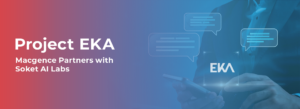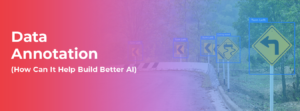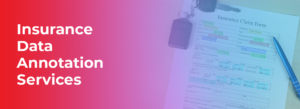Beginner Guide to Understanding Audio Annotation
Welcome to Macgence’s Beginner Guide to Audio Annotation! In this blog, we will guide you through the fundamentals of audio annotation, including its core concept and functionalities. Whether you are a beginner seeking an introduction or someone aiming to enhance your knowledge, we’ve got you covered. While audio annotation provides valuable insights, it does come with certain limitations. However, we will demonstrate the best practices to overcome these challenges. Let’s dive in together and discover the power of audio annotation!
Table of Contents
What is Audio Annotation?

Audio Annotation refers to the process of attaching meaningful labels or tags to audio data, enhancing the ability of machines to comprehend and analyse the content effectively. It helps computers recognize sounds, such as speech, music, or environmental noises, by associating descriptive information with specific segments of the audio.
In these, experts or annotators listen to the audio clips and identify key characteristics, events, or patterns, assigning relevant labels to each identified element. These labels categorize the sounds into various classes, allowing machines to learn and classify different audio types accurately.
How does Audio Annotation work?

It works by associating descriptive labels or tags with specific segments of audio data to enable machines to understand and analyze the content better. The process involves listening to the audio clips and identifying key characteristics, events, or patterns in the sound. Annotators then assign relevant labels to each identified element, categorizing the sounds into different categories for machine learning.
To start the annotation process, annotators receive guidelines or instructions that provide details on the annotation task, the categories to be used, and any specific rules to follow. These guidelines help ensure consistency and accuracy in the annotations.
As they listen to the audio, annotators mark the beginning and end of each sound event or segment that requires annotation. They carefully select the appropriate label from the predefined categories and assign it to the corresponding segment.
The labeled audio data is then used to train machine learning models, enabling them to recognize and classify sounds automatically. The models learn to associate the audio patterns with their corresponding labels, allowing them to identify similar sounds in new, unlabeled data.
Different types of Audio Annotation

It encompasses several types, each serving unique purposes in understanding and processing audio data.
- Speech-to-Text (Transcription): Audio transcription annotation involves converting spoken words in audio recordings into written text. Annotators listen to the audio and transcribe the speech, creating a textual representation of the spoken content. This type of annotation is essential for applications like voice assistants, subtitling, automatic transcription services, and making audio content accessible to hearing-impaired individuals.
- Emotion Identification: In emotion identification annotation, audio clips are labeled to reflect the emotions expressed in the content. Annotators identify and label emotions such as happiness, sadness, anger, or fear present in speech or vocal expressions. This type of annotation is vital for applications like sentiment analysis, speech emotion recognition, and virtual assistants that respond contextually to users emotions.
- Audio Classification: This type of annotation involves labeling audio clips into different predefined categories or classes based on their content. For instance, audio clips of different musical genres like rock, pop, or classical can be labeled accordingly. Annotators carefully listen to each audio sample and assign the appropriate category label, allowing machine learning models to classify similar audio data automatically.
- Language Identification: Language identification annotation is the process of identifying and labeling the language spoken in an audio recording. Annotators determine the language being spoken and provide the corresponding language label. This type of annotation is useful in multilingual applications, language recognition systems, and language-specific audio processing tasks.
Limitations of Audio Annotation

While this is a valuable tool in understanding and processing audio data, it also has some limitations that can pose challenges in certain contexts.
- Subjectivity and Ambiguity: Emotion identification and audio classification tasks can be subjective, as different annotators may interpret emotions or content differently. This subjectivity can lead to inconsistent annotations and affect the reliability of machine learning models trained on such data.
- Time-Intensive Process: Audio Transcription, especially for large datasets, can be time-consuming and labour-intensive. Annotators need to listen to each audio clip carefully and transcribe the speech accurately, which can slow down the annotation process.
- Noisy and Low-Quality Audio: In real-world audio data, there may be background noise or low audio quality, making it difficult for annotators to accurately identify and label the content. Noise reduction techniques may be necessary, but they can introduce artefacts that affect the annotation process.
- Privacy and Ethical Concerns: Audio data may contain sensitive or private information, and annotating such data raises ethical considerations. Ensuring data privacy and obtaining informed consent from contributors is essential, but it can add complexities to the annotation process.
Tips for Audio Annotation

Effective audio annotation is crucial for obtaining high-quality labeled data to train machine learning models. Whether it’s for audio classification, emotion identification, or audio transcription, here are some essential tips to ensure successful:
- Define Clear Annotation Guidelines: Before starting the annotation process, create detailed guidelines that clearly explain the task, label categories, and any specific instructions or rules to follow. Well-defined guidelines help maintain consistency and ensure that annotators understand the objectives.
- Provide Sample Annotations: Include sample annotations with your guidelines to demonstrate how to label different types of audio clips correctly. These examples serve as references for annotators and help them understand the annotation expectations better.
- Train Annotators: If possible, provide training sessions to familiarize annotators with the annotation tools and guidelines. Training sessions can address common challenges and improve the accuracy of annotations.
- Address Noise and Low-Quality Audio: For audio transcription, deal with noisy and low-quality audio carefully. Use noise reduction techniques where necessary to improve the audio quality before the transcription process.
- Iterative Refinement: Consider an iterative approach to the annotation process, especially for large datasets. Continuously review and refine the annotations based on feedback and validation results to enhance the data quality.
Conclusion
In conclusion, It is a vital process that enables machines to understand and analyze audio content effectively. Through careful labeling and categorization, it facilitates applications such as speech recognition, emotion identification, audio classification, and language identification. Despite some limitations and challenges, automation and adherence to best practices can enhance the efficiency and accuracy of audio annotation. By following the tips presented here, you can ensure accurate and reliable annotations. Embrace the power of audio annotation to unlock its potential in diverse applications, from speech recognition to language identification.
Get Started with Macgence

At Macgence, we prioritize unbiased data annotation, ensuring accurate and reliable results. Our experts eliminate sample, internal, and prejudice biases, delivering precise annotations tailored to your unique needs.
Welcome to Macgence, your audio annotation experts! Our team of skilled linguists and project management professionals is dedicated to providing top-notch audio annotation services, unlocking valuable insights from your audio data.
Embark on a seamless audio annotation journey with Macgence. Let us maximize the potential of your audio files and empower your applications with reliable information. So, Partner with us today and experience the difference our expertise makes in the world of audio annotation.
Frequently Asked Questions (FAQ’S)
Q1. Why is audio annotation important?
Q2. What are the common applications of audio annotation?
Q3. Are there automated methods for audio annotation?
You Might Like
February 28, 2025
Project EKA – Driving the Future of AI in India
Artificial Intelligence (AI) has long been heralded as the driving force behind global technological revolutions. But what happens when AI isn’t tailored to the needs of its diverse users? Project EKA is answering that question in India. This groundbreaking initiative aims to redefine the AI landscape, bridging the gap between India’s cultural, linguistic, and socio-economic […]
March 7, 2025
What is Data Annotation? And How Can It Help Build Better AI?
Introduction In the world of digitalised artificial intelligence (AI) and machine learning (ML), data is the core base of innovation. However, raw data alone is not sufficient to train accurate AI models. That’s why data annotation comes forward to resolve this. It is a fundamental process that helps machines to understand and interpret real-world data. […]
March 6, 2025
Vertical AI Agents: Redefining Business Efficiency and Innovation
The pace of industry activity is being altered by the evolution of AI technology. Its most recent advancement represents yet another level in Vertical AI systems. This is a cross discipline form of AI strategy that aims to improve automation in decision making and task optimization by heuristically solving all encompassing problems within a domain. […]
March 5, 2025
Use of Insurance Data Annotation Services for AI/ML Models
The integration of artificial intelligence (AI) and machine learning (ML) is rapidly transforming the insurance industry. In order to build reliable AI/ML models, however, thorough data annotation is necessary. Insurance data annotation is a key step in enabling automated systems to read complex insurance documents, identify fraud, and optimize claim processing. If you are an […]





